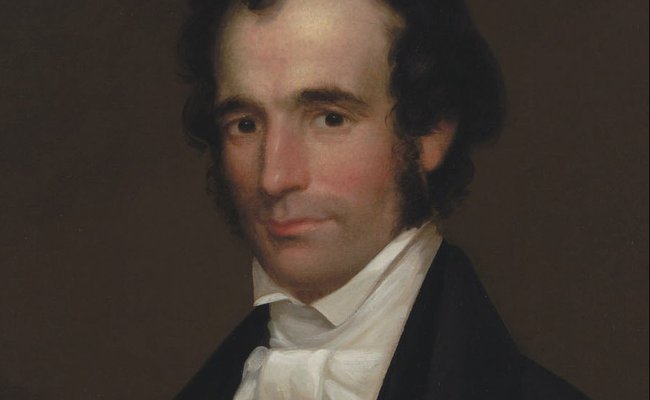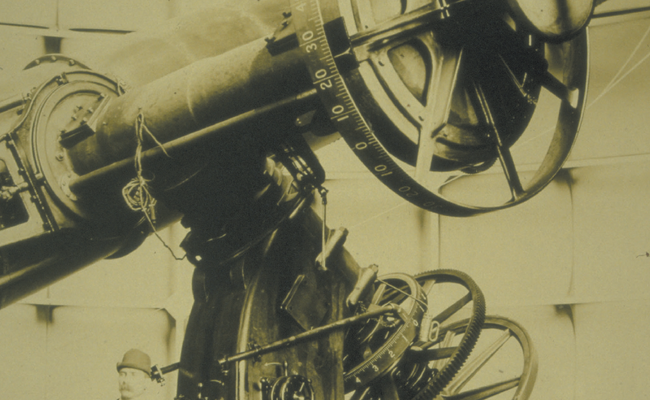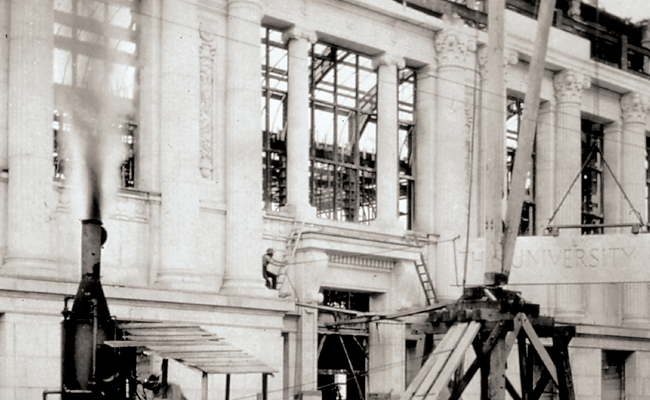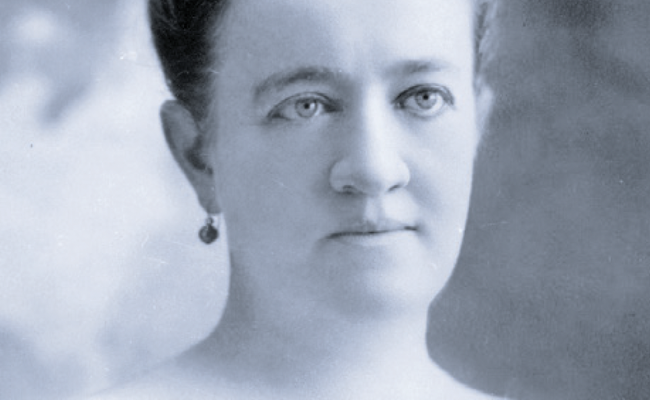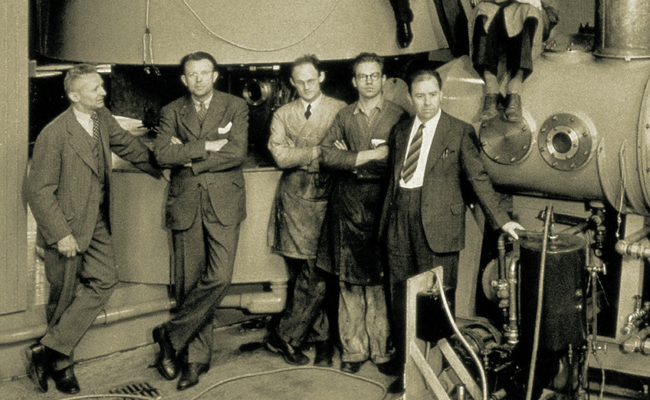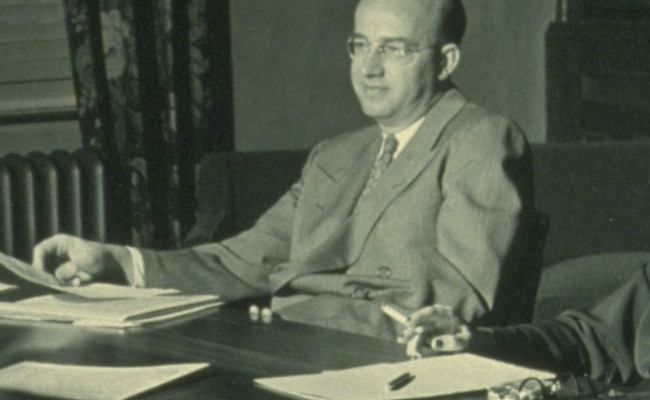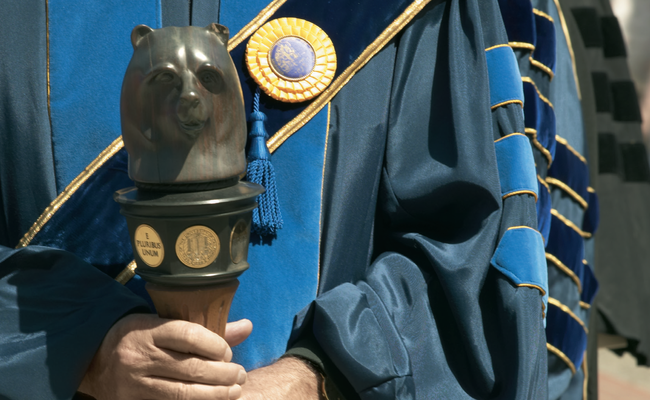History
Today’s Builders are indelibly linked to UC Berkeley’s benefactors of the past: all connected by a desire to make a difference in the world, all woven into the fabric of the university’s rich history.
Take a Walk Through the Years
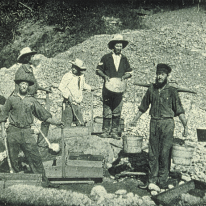
1849
The Gold Rush begins (pictured).
The First Constitutional Convention of the State of California calls for establishing a state university.
1867
The College of California merges with the state college, donating its 160-acre campus site in Berkeley to the State of California.
1869
The University of California opens its doors in Oakland.
1873
The University of California graduates its first class and moves into new quarters — North and South Halls — in Berkeley. Enrollment stands at 199 students.
The university forms an alumni association with Charles A. Garter, College of California, Class of 1866, as its first president.
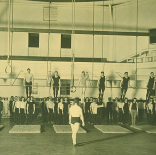
1879
Oakland businessman A. K. P. Harmon provides the funds to build Harmon Gymnasium (pictured). In 1932, Edwards Fields and Stadium are named after his son-in-law, math professor George C. Edwards, Class of 1873.

1881
Henry Douglas Bacon donates books, works of art, and funds that are matched by the State to build the Bacon Art and Library Building.
1882
William Carey Jones teaches a course in Roman law, the seedbed for Berkeley Law.
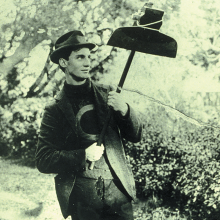
1899
The Stanford Axe (pictured) first appears at a Cal-Stanford baseball game in San Francisco.
Benjamin Ide Wheeler becomes the eighth president of the University of California.
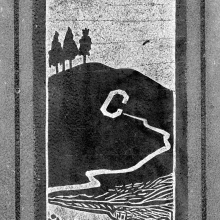
1905
Students from the Classes of 1907 and 1908 build the “Big C” on Charter Hill (pictured).
Hubert Howe Bancroft’s library is added to the university’s collection.
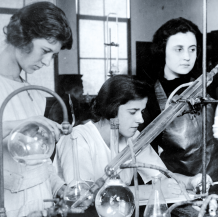
1912
Gilbert N. Lewis comes to UC Berkeley to head the College of Chemistry.
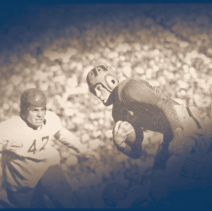
1920
Andy Smith’s unbeaten football “Wonder Team” (pictured) wins the first of four Pacific Coast Conference titles and goes on to win the Rose Bowl in 1921.
May T. Morrison donates her husband’s book collection and provides funds for the Morrison Library in Doe Memorial Library.
1924
The School of Education, founded in 1892, finds a home in Haviland Hall, built with a gift from Hannah N. Haviland.
1928
Contributions from A.P. Giannini and others support the first chair of Italian culture. Giannini also provides funds to erect Giannini Hall, home of the College of Natural Resources.
Cal Crew wins the Olympic gold medal for the United States. They repeat this feat in 1932 and 1948.
John D. Rockefeller Jr. donates $1.75 million for the purchase of land for and construction of International House, which opens in 1930.
1929
The widow of alum and regent Philip Bowles gives the funds to build the university’s first student residence hall for men.
1939
Ernest O. Lawrence receives the Nobel Prize in Physics, the first of 25 Nobel Prizes to be awarded to UC Berkeley faculty, and the first ever given to a professor at a public university.
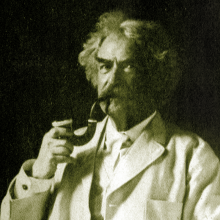
1949
Clara Clemens Samossoud donates the Mark Twain Papers to the university.
1952
Clark Kerr becomes the first chancellor of the UC Berkeley campus.
1954
Alumni House opens as an on-campus home for alums, funded by the Cal Alumni Association.
1957
The student humor magazine, The Pelican, gets its own building with a gift from the first editor, Earle C. Anthony, Class of 1903. The Pelican Building is now the Graduate Student Assembly Building.
1961
The new Student Union Building is completed with the help of gifts from two regents, Edwin W. Pauley and Edward H. Heller.

1964
The Free Speech Movement brings UC Berkeley to the center of a national debate when students, including Mario Savio (pictured), demonstrate against rules prohibiting political activities on campus.
1966
UC Berkeley ranks No. 1 in the nation for the quality of its graduate programs and maintains this ranking in each decade through the 2010s.
1968
German expressionist painter Hans Hofmann makes a gift of paintings and funds to help launch the University Art Museum, known today as the Berkeley Art Museum.
The Lawrence Hall of Science, a hands-on museum and innovative teaching center, is founded in honor of Ernest O. Lawrence.
The family of Isadore Zellerbach provides funds for Zellerbach Hall, the university’s first comprehensive performing arts center.
1969
The School of Public Policy is established. In 1997, it is named for Richard ’41 and Rhoda ’46 Goldman in honor of their gift to the school.
1980
The Bechtel Engineering Center, a gift of Laura and Stephen D. Bechtel, Sr. and other friends of Cal, opens.
Poet Czeslaw Milosz, UC Berkeley’s first Nobelist outside of the sciences, receives the medal in literature.
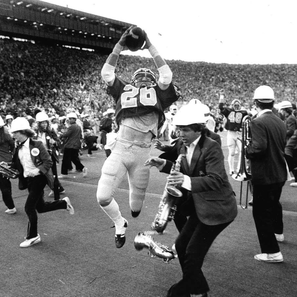
1982
Cal beats Stanford with “The Play” (pictured), a five-lateral kickoff return for a touchdown as time runs out.
Spieker Aquatics Complex opens with the lead gift made by Ned ’66 and Carol ’66 Spieker.
1983
Gerard Debreu becomes the first UC Berkeley economist to win the Nobel Prize. John Harsanyi, Daniel McFadden, and George Akerlof also win the prize in 1994, 2000, and 2001 respectively.
1988
For the first time, no ethnic group forms a majority among undergraduates at UC Berkeley.
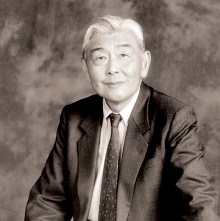
1993
A new university health center, the Tang Center, opens, thanks to a gift from the Tang Family Foundation in honor of Hong Kong businessman Jack Tang.

1994
Soda Hall (pictured), a new computer science center named for Y. Charles and Helen C. Soda, opens. More than two-thirds of undergraduates now enroll in a computer science course.
The Valley Life Sciences Building is renovated as part of a campaign to update facilities for the biological sciences with a naming gift from the Wayne and Gladys Valley Foundation.
1997
Glenn Seaborg, Nobel laureate, professor, and former chancellor, becomes the only living person to have an element (seaborgium) named after them.
Robert M. Berdahl becomes chancellor and takes over leadership of the Campaign for the New Century. The campaign raises $1.44 billion in private support, the most ever raised by a public university at the campaign’s conclusion in 2001.
Tan Kah Kee Hall, named for the industrialist and philanthropist, provides laboratory space for chemistry and chemical engineering research.

1999
The Golden Bears have a new home in the Walter A. Haas, Jr. Pavilion (pictured). This “new Harmon Gym” is twice as large but retains the spirit of the old building.
An anonymous gift of $50 million helps to launch the Berkeley Health Sciences Initiative and foster cutting-edge interdisciplinary research on campus.
2002
Hearst Memorial Mining Building reopens after a four-year renovation and seismic improvement financed by public and private funds.
The university honors the late Chang-Lin Tien by naming the Center for East Asian Studies after him.
The Association of Research Libraries ranks the Library as the top public research university library in North America.
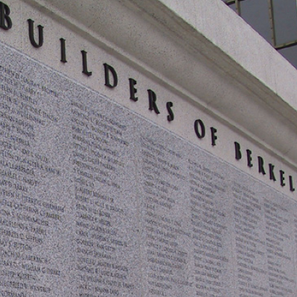
2003
The university dedicates the Builders of Berkeley monument on the terrace of Doe Memorial Library in honor of the university’s leading benefactors.
2004
Robert J. Birgeneau becomes UC Berkeley’s ninth chancellor and commits to improving access and excellence during his tenure.
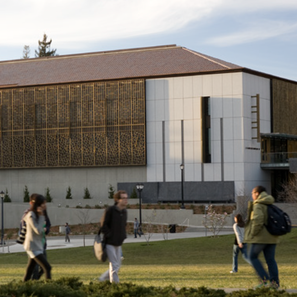
2008
With a lead naming gift, the C.V. Starr East Asian Library (pictured) opens, making it the first freestanding structure at a United States university erected solely for East Asian collections.
The Campaign for Berkeley launches with a $3 billion goal aimed at boosting the level of private support to build lasting endowment funding.
2009
The Bancroft Library reopens, following a $64 million seismic retrofit and renovation funded by the State of California and more than 700 donors, creating an elegantly upgraded home for books and special collections.
Sutardja Dai Hall opens as the new home of the Center for Information Technology Research in the Interest of Society or CITRIS.
2010
Richard C. Blum Hall is unveiled, creating a new home for the Blum Center for Developing Economies, a four-year effort to find innovative solutions to global poverty.
2011
The Simpson Center for Student-Athlete High Performance, designed to enhance educational and athletic achievement, opens.
The Magnes Collection of Jewish Art and Life, which became part of UC Berkeley in 2010, opens in a renovated home in downtown Berkeley, thanks to lead donors Warren Hellman ’55, Tad Taube, and the Koret Foundation.
Propelled by a lead $40 million gift, the Li Ka Shing Center for Biomedical and Health Sciences is dedicated. It serves as a nexus for research exploring the root causes of diseases.
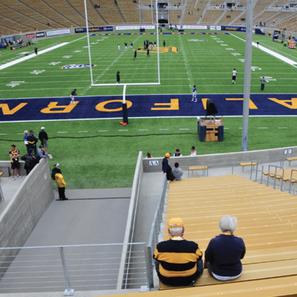
2012
The renovated California Memorial Stadium opens, bringing significant enhancements such as improved fan seating and public spaces, seismic upgrades, a state-of-the-art press box, and better views.

2013
The Campaign for Berkeley concludes, having raised a record $3.13 billion, reinforcing UC Berkeley’s stature as a world-class university.
Nicholas B. Dirks becomes the university’s 10th chancellor. He is known for his commitment to accessible, high-quality undergraduate education, the globalization of the university, and innovation across the disciplines.
Randy W. Schekman (pictured), professor of molecular and cell biology, wins the Nobel Prize in Physiology or Medicine for his role in revealing the machinery that regulates the transport and secretion of proteins in our cells.
2014
UC Berkeley and UCSF launch the Innovative Genomics Initiative, backed by a $10 million gift from the Li Ka Shing Foundation. At its core is a revolutionary technology discovered by Professor Jennifer Doudna, the initiative’s first executive director.

2016
The UC Berkeley Art Museum and Pacific Film Archive (pictured) opens at its new location in downtown Berkeley. The 83,000-square-foot facility reimagines the former UC Berkeley printing plant into a dramatic new structure.
The Legends Aquatic Center, funded primarily by private donors, opens with splashy fanfare. The $19 million Olympic-grade facility has a 52-meter pool, three-story diving tower, and moveable bleachers that can accommodate 500 spectators.
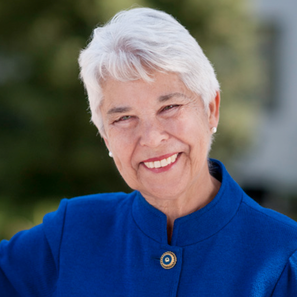
2017
Carol T. Christ (pictured) is named Berkeley’s 11th chancellor. The university’s first female chancellor, she is a renowned scholar of Victorian literature. Christ has held numerous leadership and teaching positions at UC Berkeley and later served as president of Smith College.
More than a decade in the works, Connie & Kevin Chou Hall is on track to be the country’s greenest academic building. The $68 million space, which includes 80,000-square-feet of state-of-the-art classroom technology and flexible learning spaces for students in the Haas School of Business, was funded entirely by Berkeley Haas’s dedicated alums and friends.
2018
UC Berkeley celebrates its sesquicentennial on March 23, 2018. Guided by the motto, Fiat Lux, the university continues to light the way for generations of brilliant students.
The Magnes Collection of Jewish Art and Life receives the full works of legendary Russian-born American photographer Roman Vishniac (1897–1990). Gifted by his daughter, Mara Vishniac Kohn, the collection includes over 6,500 photographic prints, 10,000 negatives and 40 albums of slides.
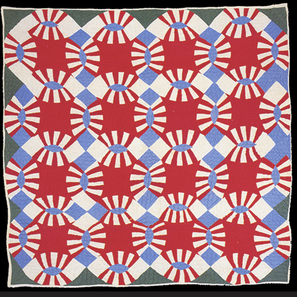
2019
In 1994, the late Warren and Chris Hellman established the Hellman Fellows Program to support the research of promising early-career professors who show capacity for great distinction in their fields. A $20 million matching grant from the Hellman Fellows Fund will support Berkeley’s program in perpetuity.
The Weill Neurohub is launched with a $106 million gift from the Weill Family Foundation. A collaboration between UC Berkeley, UC San Francisco, and the University of Washington, the center will focus on finding new treatments for brain disease.
Eli Leon, an Oakland-based art scholar, gifts nearly 3,000 quilts (pictured) to the UC Berkeley Art Museum and Pacific Film Archive. Representing works by more than 400 African American artists, it is believed to be the largest collection of its kind ever assembled.
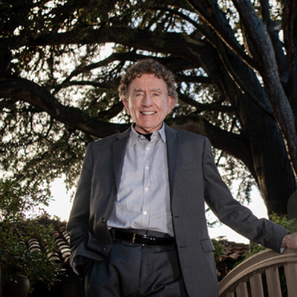
2020
The university publicly launches Light the Way: The Campaign for Berkeley after raising more than $3.4 billion in its quiet phase. With a goal of reaching $6 billion by the end of 2023, it is the largest fundraising campaign in UC Berkeley’s history.
The university commemorates the 150th anniversary of the UC Board of Regents’ resolution to open the university’s doors to women “on equal terms” with men. The yearlong celebration, titled 150 Years of Women at Berkeley, recognizes the countless women who have studied, worked, and researched at Berkeley since then.
The College of Natural Resources receives its largest-ever gift, $50 million, from former dean Gordon Rausser (pictured). The college is renamed in his honor.
The COVID-19 pandemic forces the university to modify operations, but research units, faculty, administrators, and donors quickly mobilize to launch unprecedented breakthroughs in testing and potential vaccines and provide immediate support to students.
UC Berkeley biochemist Jennifer Doudna wins the Nobel Prize in Chemistry, sharing it with colleague Emmanuelle Charpentier for the co-development of CRISPR-Cas9, a genome editing breakthrough that has revolutionized biomedicine.
Reinhard Genzel, professor emeritus of physics and of astronomy, shares the Nobel Prize in Physics for the discovery of a supermassive compact object at the center of our galaxy.
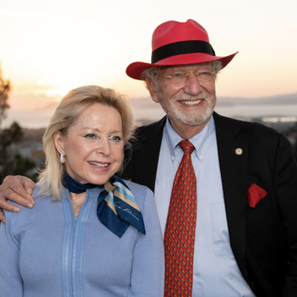
2021
The Dr. Herbert and Nicole Wertheim Family Foundation pledges a historic $50 million to the UC Berkeley School of Optometry, the largest gift ever to be received by a school of optometry in the country. The school is renamed the Herbert Wertheim School of Optometry and Vision Science. (The Wertheims are pictured in the photo.)
Building on an anonymous gift of $252 million, UC Berkeley receives three additional gifts of $25 million each to support the Gateway, a visionary new home for the Division of Computing, Data Science, and Society. The campus center will reinforce the university’s position as a leader in computing and data science research and education.
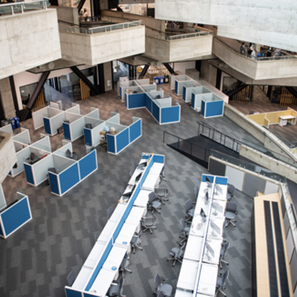
2022
The Bakar BioEnginuity Hub (pictured), the campus’s state-of-the-art home for research and innovation, opens its doors. The remarkable facility, located in Woo Hon Fai Hall, pairs the Bakar Labs incubator with fellowships and programming for students and researchers, equipping STEM entrepreneurs with labs, offices, equipment, and shared community spaces.
Construction begins on the Helen Diller Anchor House, a 772-bed, apartment-style housing project for UC Berkeley transfer students that is being designed, built, and funded by the Helen Diller Foundation.
The first cohort of students supported by the African American Initiative (AAI) graduates from UC Berkeley. The AAI scholarship is a valuable tool to help draw African American students who have been admitted but would otherwise choose to go elsewhere, helping to transform the student population and create a more welcoming and inclusive campus.
2023
Berkeley becomes an Asian American and Native American Pacific Islander-Serving Institution.
The UC Board of Regents votes to establish UC Berkeley’s College of Computing, Data Science, and Society, the campus’s first new college in more than 50 years.
Berkeley Haas celebrates its 125th anniversary and recognizes Cora Jane Flood for her gift that established the school in 1898.
The Herbert Wertheim School of Optometry & Vision Science celebrates its 100th birthday with a host of centennial events throughout the year.
Berkeley is ranked the No. 1 university for producing Peace Corps volunteers over the past 20 years — more than 3,750 in all.
